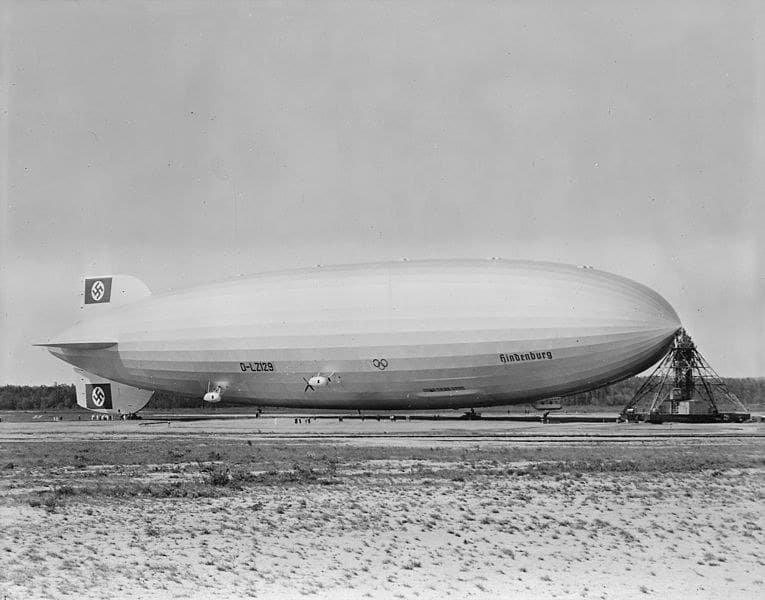The Hindenburg airship was built in 1936 in Germany and is the largest passenger aircraft of its kind. It is named after German President Paul von Hindenburg. Its board number is LZ 129, from a series of airships built and operated for transport by the company of Ferdinand Graf von Zeppelin (1838-1917).
Hindenburg began regular passenger flights as early as May 1936, flying repeatedly and successfully to the United States and Rio de Janeiro. In one year, the airship made 37 flights over the Atlantic Ocean, carrying a total of 3,000 passengers. The shortest flight is 43 hours.
The journey in the airship was quite comfortable. Passengers had double cabins with shower, restaurant with kitchen and lounge (with lightweight aluminum piano), observation room.
The main safety measure was a strict smoking ban. When boarding the airship, the passengers took all cigarettes, matches and any devices that could cause a spark. However, smokers were allowed to smoke in a special well-insulated room.
All crew members were required to wear special antistatic clothing and shoes with insulated soles.
Hindenburg’s last catastrophic flight
The airship opened the new season on May 3, 1937, departing from Germany for New York. There are 36 passengers, 14 stewards, 22 mechanics and 25 pilots on board. There are 900 kg suitcases and 2 dogs in the luggage compartment. Captain of the zeppelin is Max Pruss – an experienced pilot, a veteran of the First World War.
After a 77-hour flight, Hindenburg reached New York on May 6, where many curious citizens, including journalists, were waiting for him at the observation deck of the Empire State Building. The airship took a tour of the city and headed for the landing base. From there, he was denied a landing due to bad weather and the airship circled for some time, waiting for permission.
At 19:00 a landing permit was obtained and Hindenburg was lowered to 180 m. During his approach to the runway, a strong crosswind appeared and the captain ordered a sharp turn. Due to this abrupt maneuver, one of the steel ropes breaks, hits and pierces one of the hydrogen cells. Hydrogen is starting to leak – the pilots noticed that the tail was heavy, but did not realize that it could be due to a leak. Due to the humidity of the air and the movement of the airship, it became electrified, and when the ropes were lowered and caught by the people below, an electric discharge flowed from the contact of the rope with the ground to the metal frame. As a result, hydrogen leaks from Sector 4. The captain manages to partially control the situation and, at the risk of his life, slowly lowers the airship to the ground. This helps some of those on board to survive by jumping out of the panoramic windows in the observation hall. As a result, of the 97 passengers and crew on board, 62 managed to escape.









